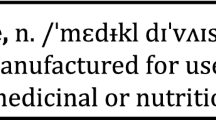Abstract
Health costs, including the cost of pharmaceuticals, have been rising throughout the world for 35 years. Governments are determined to reduce public expenditure on health; pharmaceuticals are an obvious if frequently an inappropriate target. Cost containment measures include positive and negative lists, permission for more over-the-counter drugs, reference pricing and other price and profit controls, generic substitution, patient copayments, and drug budgets for general practitioners.
These methods have been tried in various European countries and their experiences are reviewed. The advantages and drawbacks of the methods to patients, physicians, and the pharmaceutical industry are discussed. The question of elasticity of demand for pharmaceuticals is reviewed in an Appendix and a value varying between −0.44 and about −1.3 is obtained.
The industry response to cost containment has been mixed. Some of the research-based companies have followed confrontational policies with their governments; others have tried collaborating. Companies aim at “satisficing” the market, that is, making the best profits they can consistent with not generating adverse publicity. The generics companies, which appear at first sight to profit from cost-cutting measures, are actually vulnerable to competition in generics from the research-based companies. Most companies are following policies of risk minimization and this is reflected in the large number of mergers in recent years.
One change that has come about is that policy makers are collaborating internationally. The idea that multinationals can confront governments in Europe is now seen to be untrue, although it may be successful in the United States. The best prospect for pharmaceutical companies is to reach agreements with governments which enable them to flourish if they are innovative and to survive if they are not. This policy has so far been successful, and the industry seems to have emerged largely undamaged from the pressures of the early 1990s.
Similar content being viewed by others
References
Burstall ML, Reuben BG, Reuben AJ. Pricing and reimbursement regulation in Europe: The industry perspective. Drug Inf J. 1995;29:273–283.
Burstall ML, Reuben BG. Cost containment in the European pharmaceutical market. London: IMS Marketletter; 1992.
Burstall ML, et al. The single market review, impact on manufacturing. Volume 2. In: Pharmaceutical Products. Office of Official Publications of the European Communicaties/Kogan Page-Earthscan; 1997.
Burstall ML. Pricing and reimbursement in Western Europe 1998; A concise guide. Dorking, Surrey, UK: PPR Communications Ltd.; 1998.
Chalkley M, Robinson R. Cost sharing in health care. London: OHE: 1997.
Marchant N. Drivers of the growth in medicines expenditure. London: OHE: 1997.
Schwabe U, Paffrath D. Gesundheitsreformgesseuz und Arzneimitrelversorgung Zwischenbilanz. In: Arzneiverodnungs report ’91. Stuttgart: Gustav Fischer Verlag; 1993.
Health Economics Centre, Cesav. SCRIP. 1993; 1860:4.
Reher R, Reichelt H. Sozialer Fortschrit. May 1991;116.
GP survey in Le Quotidien de Médecin. SCRIP. 1993;1859:7.
Government Statistical Service. Statistics of prescriptions dispensed in the Community: England 1987-1997. London: Department of Health; 1998.
Munnich F. IIR’s Pharma Pricing Meeting ’93. Reported in SCRIP. 1993;1861:6.
Burstall ML, Reuben BG. Critics of the Pharmaceutical Industry. London: REMIT; 1990.
Lang RW. The Politics of Drugs. Farnborough: Saxon House; 139–188 and 257–292.
SCRIP. 1993;1861:18.
Reuben BG. The Times. London. March 3, 1998.
James BG. Pharm Vision 2005. Massachusetts: Spectrum (Decision Resources); October 1997, 67.
Green D. Financial Times pharmaceuticals survey. Financial Times. March 16, 1998.
Reuben BG, Burstall ML. Generic Pharmaceuticals–the Threat. London: Economists Advisory Group; 1989.
European Commission. Preliminary draft for measures aiming at modifying and completing Directive 89/105/EEC concerning the pricing and reimbursement of medicinal products for human use (111/3749/ 91).
SCRIP. 1993;1860:3, 1857:2.
European Commission. Communication from the Commission to the Council and the European Parliament on the outlines of an industrial policy for the European Community. COM(93)718 final 1993.
Pharmaceuticals Survey. Financial Times. London. March 23, 1994.
References
Newhouse JPA. A design for a health insurance experiment. Inquiry. 1974;16:5–27.
Manning WG, Newhouse JP, Duan N, Keeler E, Lei-bowitz BA, Marquis MS. Health insurance and the demand for medical care: Evidence from a randomized experiment. Am Economic Rev. 1987;77:251–277.
O’Brien B. The effect of patient changes on the utilisation of prescription medicines. J Health Econ. 1989; 8:109–132.
Ryan M, Birch S. Charging for health care: Evidence on the utilisation of NHS prescribed drugs. Soc Sei Med. 1991;33:681–687.
Hughes D, McGuire A. Patient charges and the utilization of NHS prescription medicines: Some estimates using a cointegration procedure. Health Economics. 1995;4:213–220.
Chew R, Griffin D. Trends in usage of prescription medicines by the elderly and very elderly between 1977 and 1988. ABPI briefing, London, February 1990.
Key health statistics for general practice, 1996. London; Office of National Statistics; 1996. www.ons.gov.uk.
Author information
Authors and Affiliations
Rights and permissions
About this article
Cite this article
Burstall, M.L., Reuben, B.G. & Reuben, A.J. Pricing and Reimbursement Regulation in Europe: An Update on the Industry Perspective. Ther Innov Regul Sci 33, 669–688 (1999). https://doi.org/10.1177/009286159903300304
Published:
Issue Date:
DOI: https://doi.org/10.1177/009286159903300304




